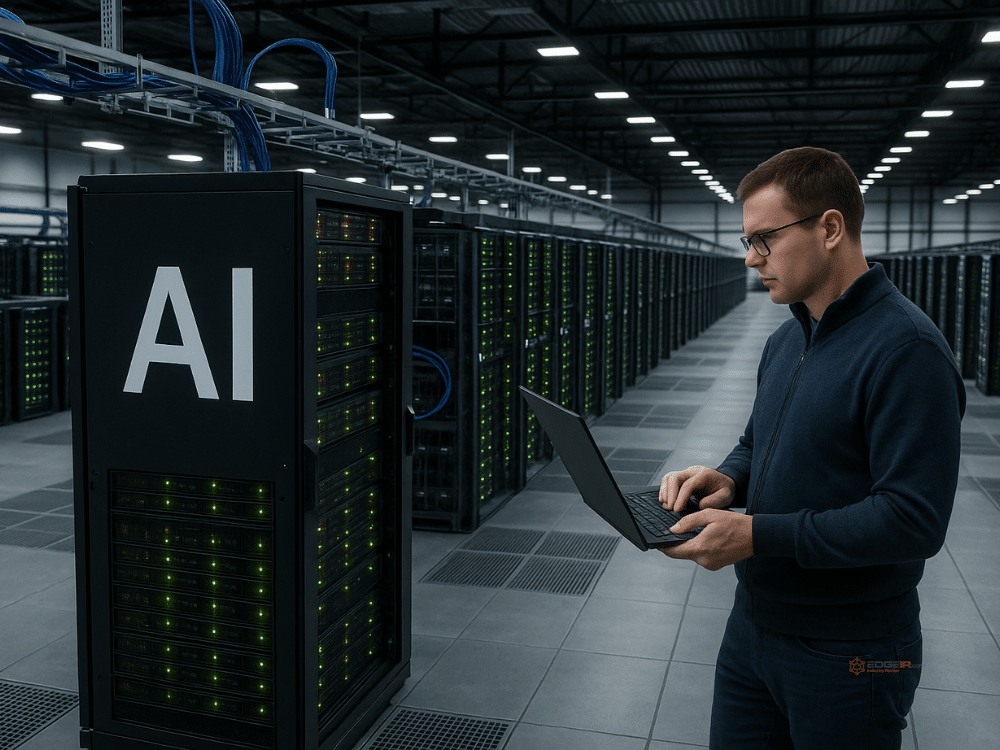What are AI factories?

AI demand has grown exponentially over the past years. Competing with sites and file storage services for computing resources offered by traditional data centers is unsustainable, especially as AI models become more sophisticated and more industries adopt them. The world needs an alternative infrastructure, and that is AI factories.
What is an AI factory?
AI factories are specialized, dedicated computing solutions for managing the entire AI life cycle, from data ingestion to high-volume inference. They can be small clusters of GPUs or large-scale facilities housing hundreds of thousands of advanced chips. Like traditional factories that turn raw materials into manufactured goods, AI factories transform raw data into intelligence at scale.
These accelerated computing solutions represent a dramatic shift from retrieving information based on training data to producing tailored content using AI models. They generate tokens predictions or responses that drive business actions and manifest as text, images, videos, and research outputs.
AI factories use token throughput to measure the intelligence they produce. Expressed in tokens per second, it represents the rate at which a model can process or generate an output. Aside from being scalable, these factories contribute to the productivity and energy efficiency of agentic AI and physical AI, boosting performance and completing more workload per watt.
What are the components of an AI factory?
Every AI factory has four components: infrastructure, data pipelines, algorithms and experimentation platform.
-
Infrastructure
Infrastructure refers to the hardware and software powering an AI factory’s computing prowess. Nvidia products are the current standard. The company produces turnkey AI supercomputers and is a technology partner in the Stargate Project, OpenAI’s AI factory for ChatGPT.
-
Data pipelines
Datafication is a semiautomated process for gathering, cleaning, integrating and securing raw data, turning it into a format AI models understand. AI factories require high-quality data to yield accurate, actionable insights.
-
Algorithms
Algorithm development is vital for AI factories to develop models that produce outputs relevant to end users. Powerful software serves as the foundational architecture underpinning algorithms.
-
Experimentation platform
The experimentation platform enables users to optimize, test and fine-tune AI models. It fosters innovation by allowing teams to explore possibilities, evaluate the quality of algorithmic predictions or responses, and adjust models until they deliver desired results.
Use cases for AI factories
AI factories are valuable for nearly all industries. Examples include:
- Automotive: Cutting-edge AI algorithms can help autonomous vehicles make correct acceleration, steering, maneuvering, signaling and braking decisions instantaneously using data acquired through sensor fusion, making them safer and more reliable.
- Retail: Accurate AI-fueled predictions can improve demand forecasting, preventing excess inventory and stockouts.
- Manufacturing: Predictive AI models can aid tool maintenance by anticipating misalignment due to repetitive movements, enabling proactive recalibration and ensuring high levels of precision.
- Finance: AI systems can improve credit risk management and fraud detection by gleaning deeper insights from mountains of consumer data.
- Health Care: Machine learning models shorten the usual drug discovery and development time of 12 to 15 years, allowing pharmaceuticals to enter markets, improve lives and generate revenue more quickly.
How are AI factories deployed?
AI factories can be in the cloud, on-premise or hybrid. Hyperscalers will control 61% of the capacity of all data centers by 2030, catering to lightly regulated organizations’ AI-centric computing needs.
On-premise deployments are more suitable for businesses subject to strict oversight. Experimenting with AI models in-house offers more control and security. Innovation comes with risks, and using an isolated AI factory can limit the negative impact of rogue systems and protect organizations from liability.
The hybrid model balances the scalability of AI cloud computing facilities with the control and security of on-premise infrastructure. It enables AI adopters to conserve capital and maximize resources to boost cybersecurity and safeguard trade secrets.
AI factories manufacturing intelligence of tomorrow
AI factories are the wave of the future. While part of this AI-centric digital infrastructure is under construction, leveraging it as soon as possible to handle AI workloads puts organizations ahead of the curve.
About the author
Ellie Gabel is a freelance writer as well as an associate editor for Revolutionized.com. She’s passionate about covering the latest innovations in science and tech and how they’re impacting the world we live in.
Hailo-10H debuts as first edge AI chip for on-device generative models
Article Topics
AI factory | AI infrastructure | AI/ML | edge computing | hybrid cloud


Comments